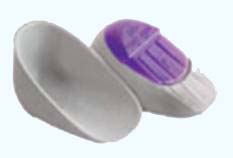Introduction
The heel bone is the largest bone in the foot and absorbs the most amount of shock and pressure. A heel spur is a hook of bone that can form on the heel bone of the foot. Heel spurs are associated with plantar fasciitis. Heel spurs can cause extreme pain in the rearfoot. The pain is most intense while standing or walking.
Causes
Heel spurs develop as an abnormal growth in the heel bone due to calcium deposits that form when the plantar fascia pulls away from the heel. This stretching of the plantar fascia is usually the result of over-pronation (flat feet), but people with unusually high arches (pes cavus) can also develop heel spurs. Women have a significantly higher incidence of heel spurs due to the types of footwear often worn on a regular basis.
Diagnosis
The diagnosis can be confirmed with simple plain x-ray of the heel that shows the spur./
Treatment
The key for the proper treatment of heel spurs is determining what is causing the excessive stretching of the plantar fascia. When the cause is over-pronation (flat feet), an orthotic with rearfoot positioning and longitudinal arch support is an effective device to reduce the over-pronation, and allow the condition to heal.
Other common treatments include stretching exercises, losing weight, wearing shoes that have a cushioned heel that absorbs shock, and elevating the heel with the use of a heel cradle, heel cup, or orthotic. Heel cradles and heel cups provide extra comfort and cushion to the heel, and reduce the amount of shock and shear forces experienced from everyday activities.

| Last reviewed | : | 01 May 2012 |
| Writer | : | Dr. Azaiddin Akasah |
| Reviewer | : | Dr. Heselynn Hussein |







